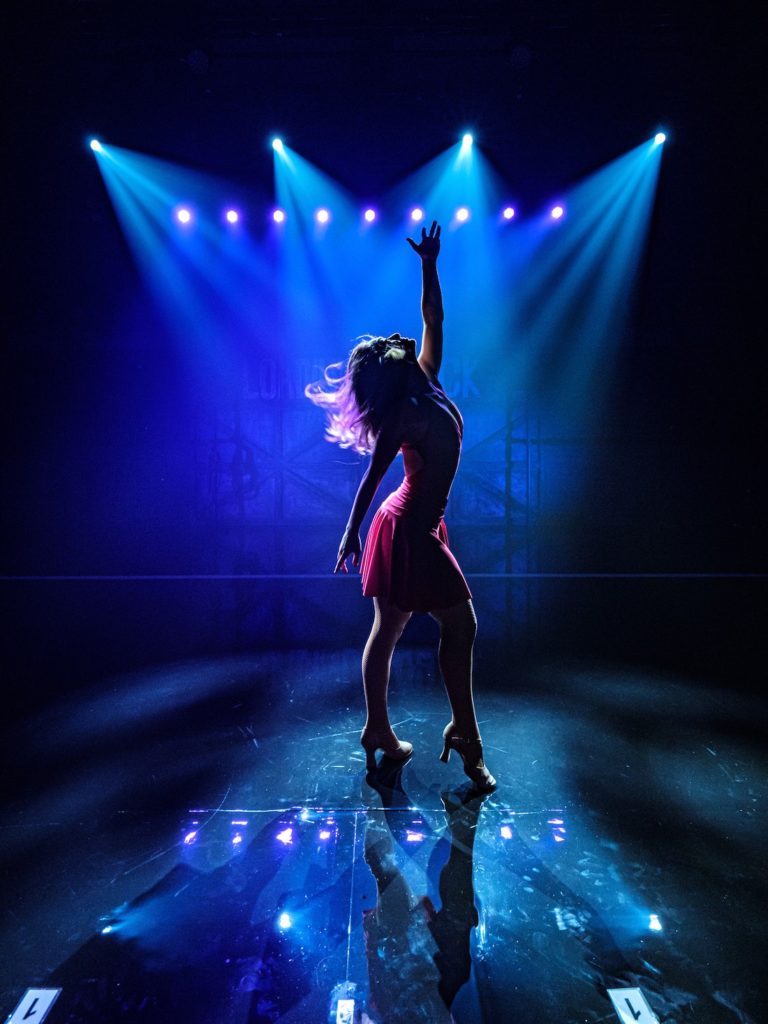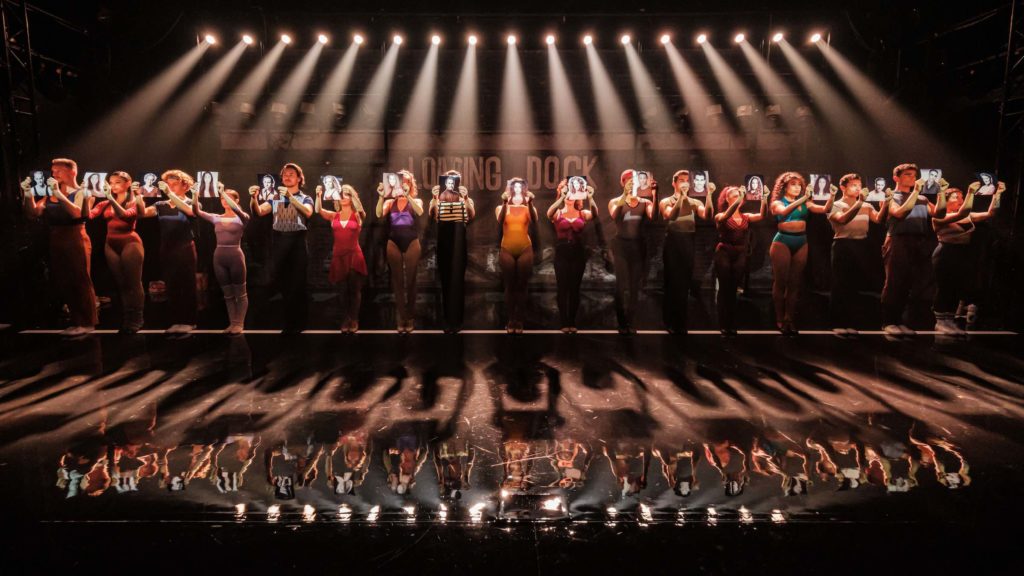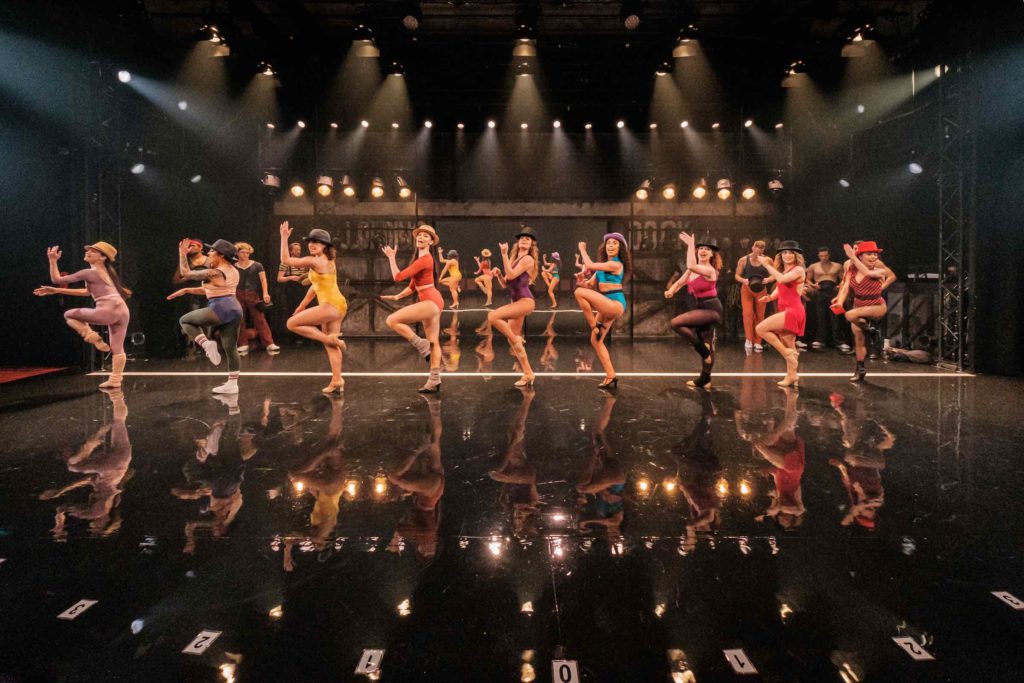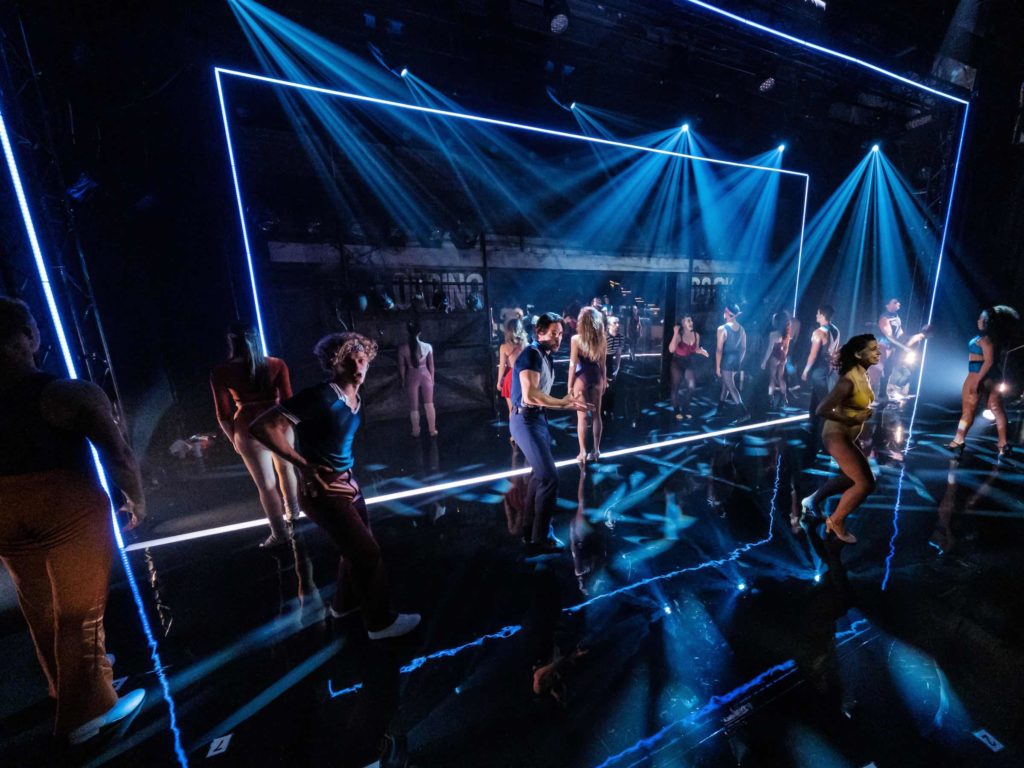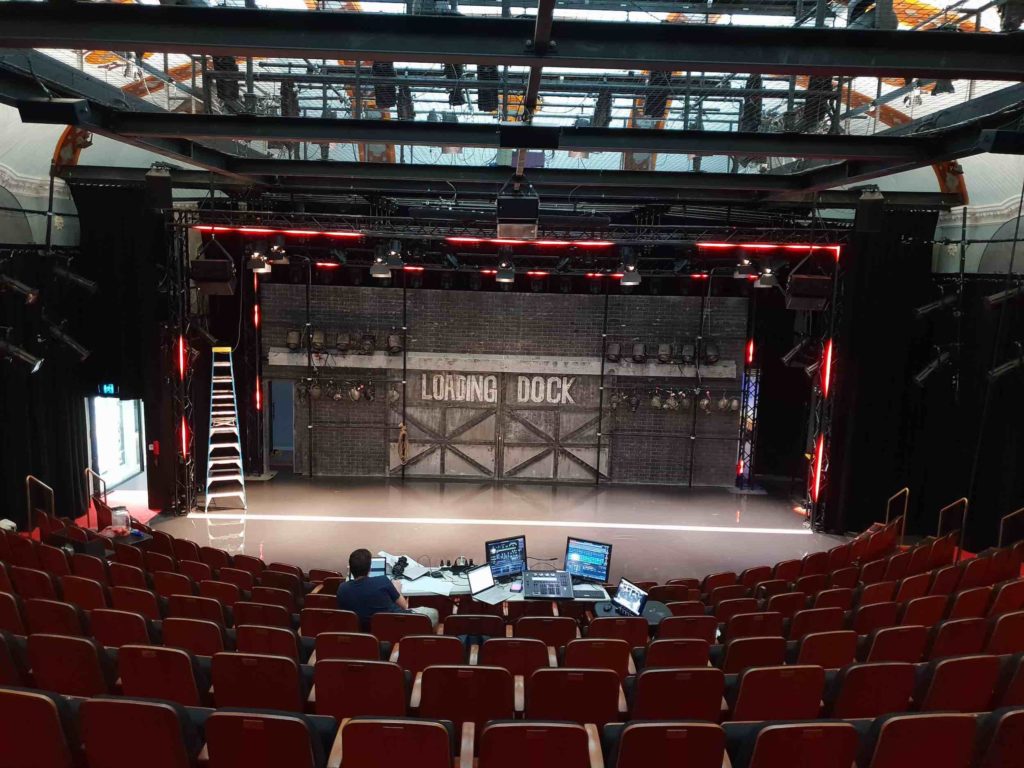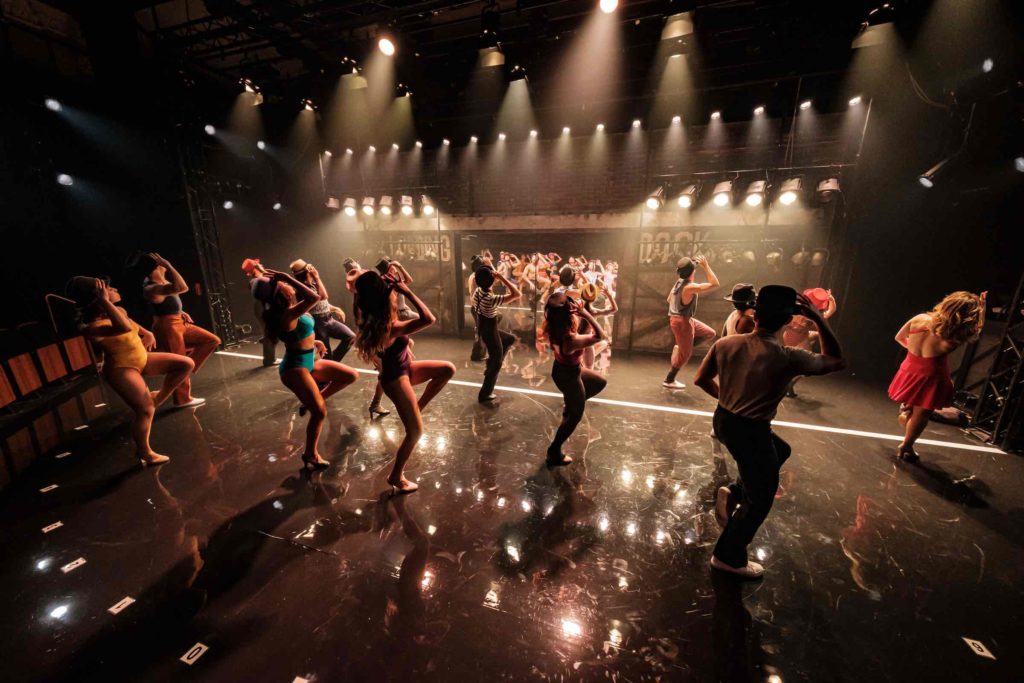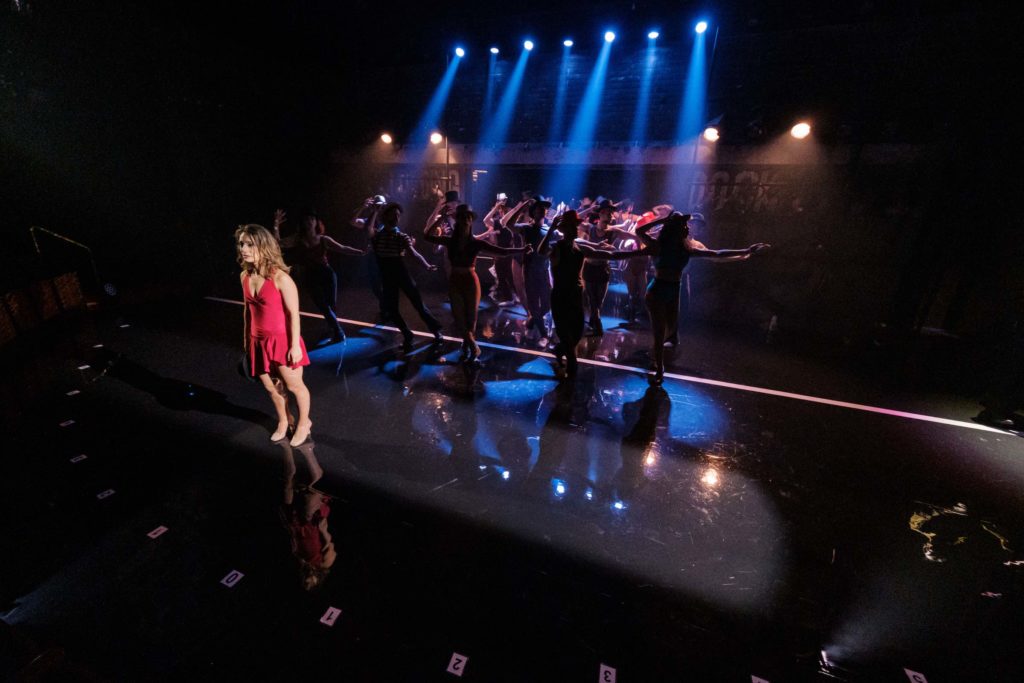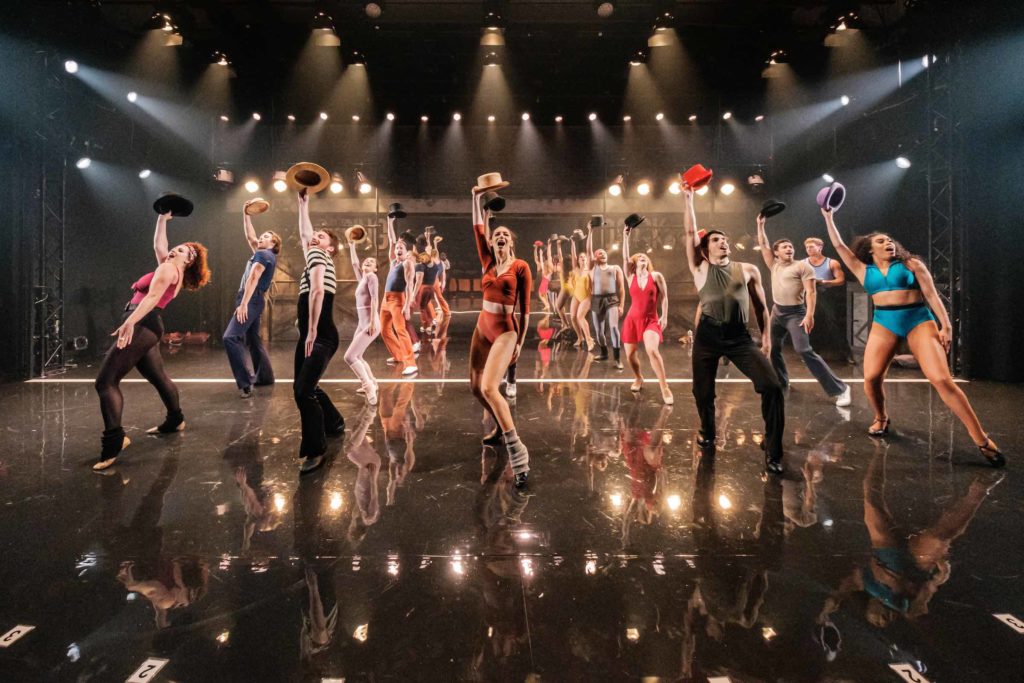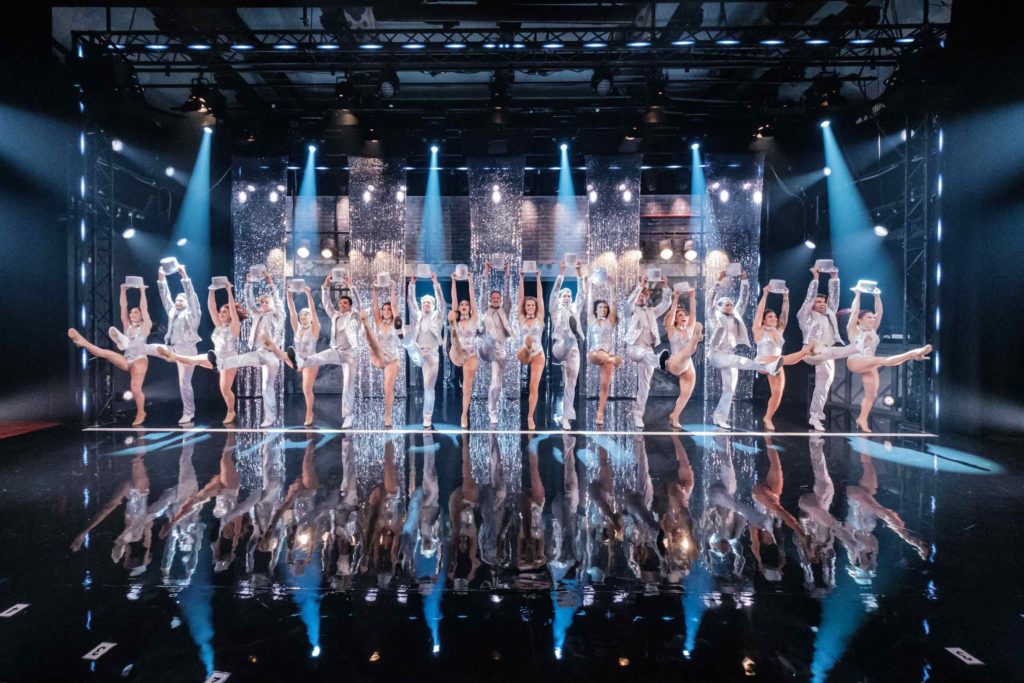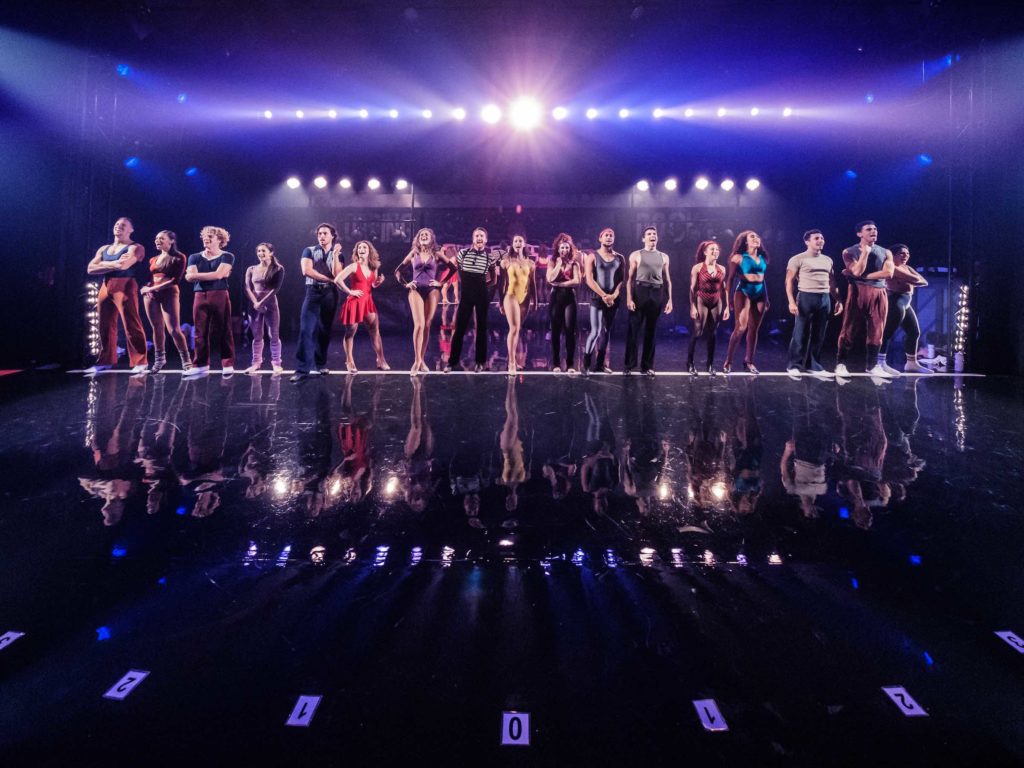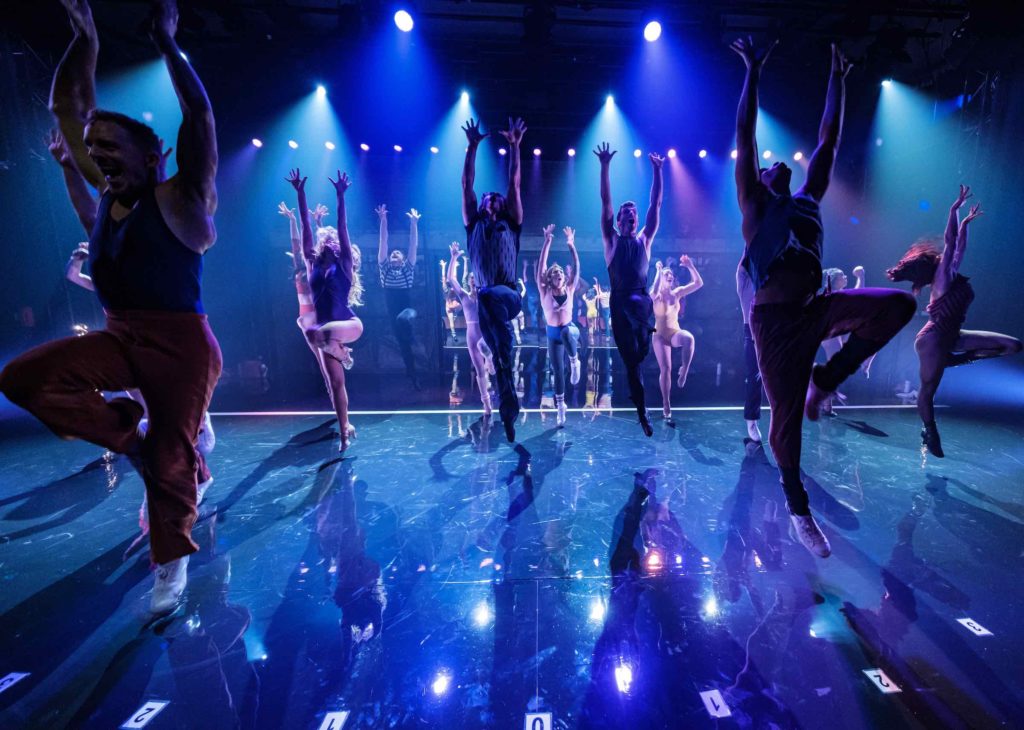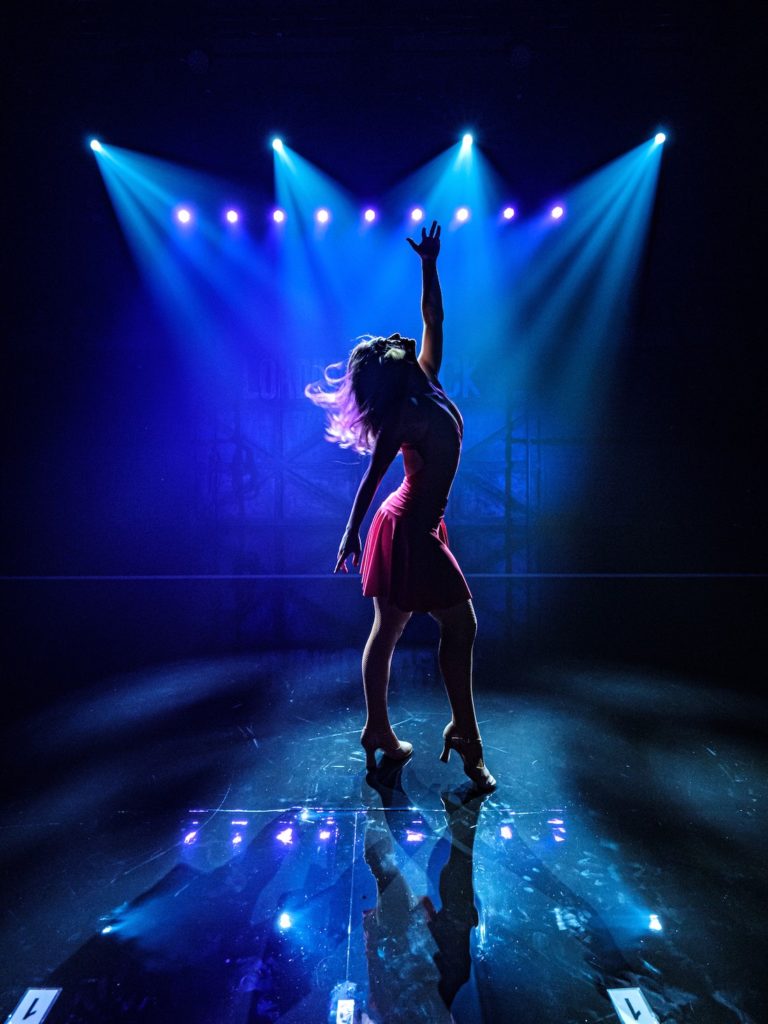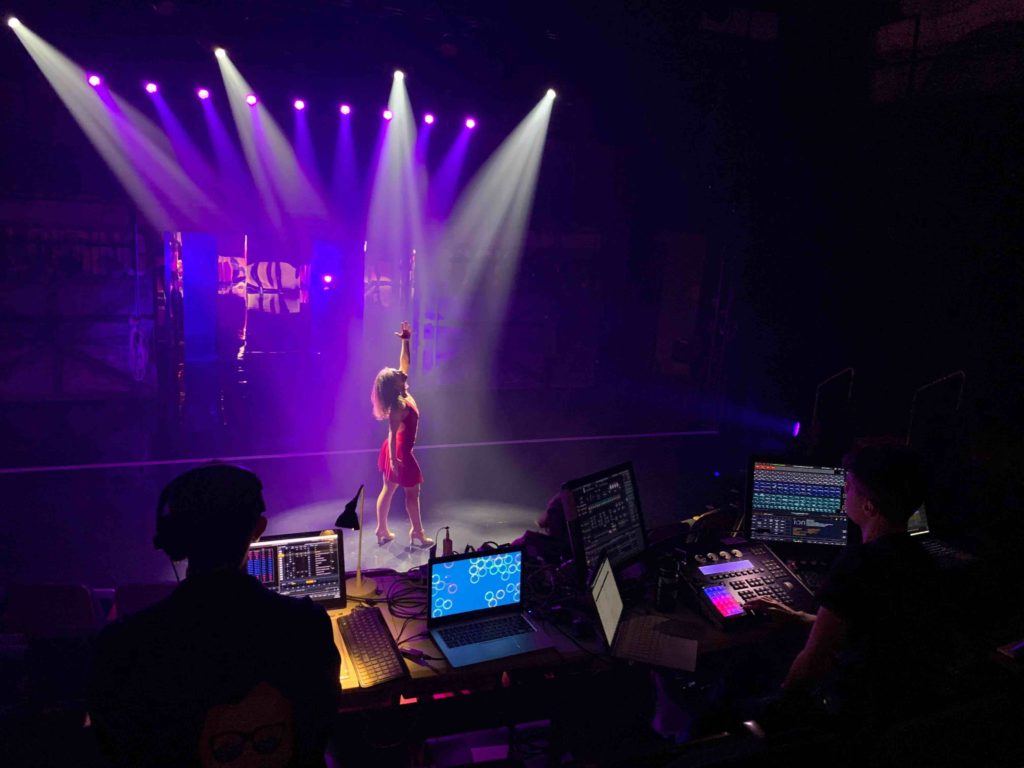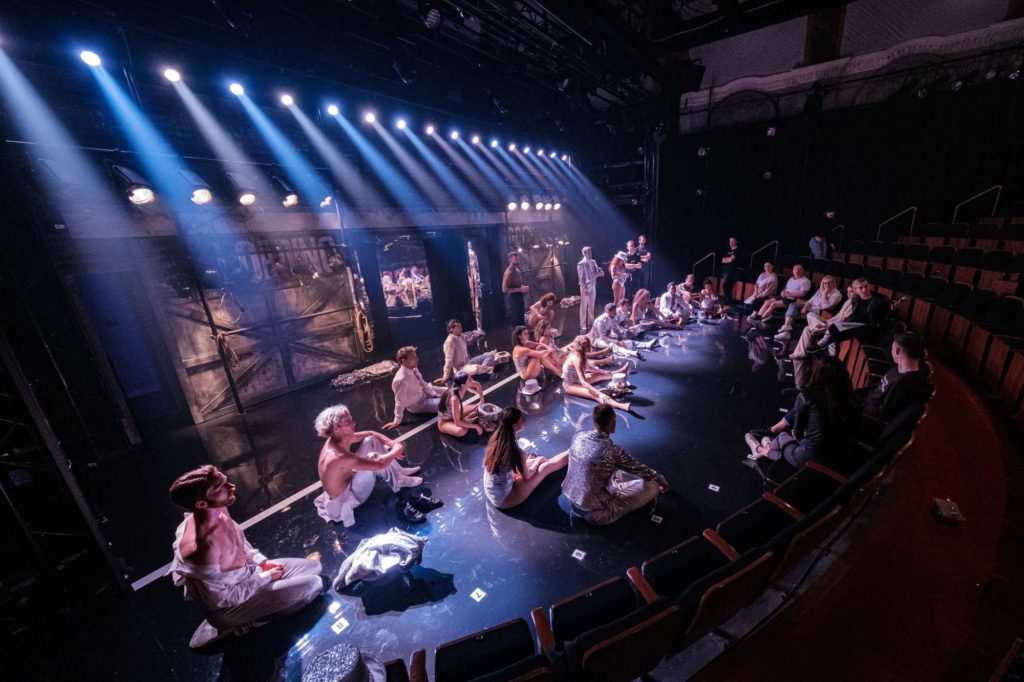News
19 May 2020
A Chorus Line

Subscribe to CX E-News
When A Chorus Line opened on Broadway in 1975, it created a storm and revolutionised everyone’s notion of what a musical could be. The original Broadway production ran for 15 years but unfortunately, Darlinghurst Theatre Company’s recent staging of this classic never had its Opening Night.
The show was one of the last to hang in there during the COVID-19 shutdowns in Sydney. The theatre seats 200 exactly and they were still powering ahead when the restrictions closed many other shows over 200 pax.
Regrettably, on the day of Opening Night, the restrictions were limited further down to 100 pax and the company made the heart-wrenching decision to suspend their 2020 season until further notice.
From the start, this new production of A Chorus Line set out to be different.
Whilst still set in the 1970s on a theatre stage, it has fresh choreography from the director and choreographer Amy Campbell, who was keen to give it a modern flair.
The show was lighting designer Peter Rubie’s second mainstage show with Darlinghurst Theatre Company, a company he states are a dream team to work with.
Amy’s approach to the staging gave him creative license to be a bit more dynamic with the lighting.
The traditional audition scenes are lit as standard with mostly generic lights, including a simple 1k Fresnel tungsten top wash, but there are plenty of moments that call for accents, colour and movement which often occurs once the storyline breaks away from the theatre world and into people’s thoughts.
Simon Greer designed a great set comprised of truss arches and scaffold pipes which make much of the back wall of the set and, thanks to a generous donation from NIDA, Peter was able to add a collection of Strand Patt lights that cover the racks and help bring that 1970s backstage theatre feel.
Bit by bit at select moments in the show, they come to life, giving a stark contrast between the warmth (literal as well as colour temperature!) against the cooler and more saturated colours the movers and LEDs produce.
The workhorses of the lighting rig were 17 Chauvet Rogue R1 Washes that acted as a backlight/spotlight for each of the 17 dancers on the line, just like the line of lights in every other production of A Chorus Line, but it was an ambitious dream of Peter’s for them to all be moving lights to enable colour changing and add other strengths and dynamics to that line.
“The Rogue R1 Wash was a perfect choice,” commented Peter. “I needed something that had good colour rendering enabling me to achieve static looks, like a row of tungsten par cans, yet also more dynamic moments of colour.
“Zoom was a welcome benefit to flood out at times and give an even full stage backlight. The R1 Wash perfectly fitted in the gap between the theatre back wall and the rear arch, which was only 500mm.”
The Rogue R1 Washes worked more than any other light in the rig as there are often key moments where focus shifts in and out of characters on the line.
Being able to pick out solo moments from the rest on the line with a quick colour contrast was invaluable for Peter, as was jumping quickly from general states to tightly focused beams of lights on the dancers.
Peter added five Claypaky Axcor Profile 400s to his rig, saying that they are a great framing unit if you’re on a tighter budget in a small to mid-sized theatre.
“They have the same reliability and features as the more expensive units,” he added.
“If I had to be picky, I would say the colours take a tiny bit longer to calibrate between units for precise skin tones but I otherwise can’t fault them.
“I had three of these units out FOH for picking out people in tight specials, instead of any follow-spots. Another two were perch shots to do more area focuses / high sides and tighter shuttered areas, and this helped split the stage up into different zones/play areas.
“There were even some live shutter moves in the show, including the three FOH units, covering the full width of 17 dancers on the line and wiping the shutter blades from their faces to feet, in an instant snap.
“The full curtain ability of the shutters in these units made that possible, which is something you only usually find in the higher end units.”
Six Martin MAC Quantum Profiles provided extra dynamic moments of texture/backlight spots and feature area washes in conjunction with the R1 washes.
They may seem an odd choice for theatre, but on a smaller budget, Peter likes them for their very flat field and near-silent operation. Added to that were four Mac Aura XB that according to Peter are hard to beat for an LED wash light on skin tones.
It’s extremely hard to get sidelight/shin buster light downstage in this theatre as the front row is on a curve that wraps the downstage two meters or so and there is little to no place on the floor for sidelights.
A single unit onstage, either side of the stage, did low angle shots, sometimes just one or two people and at other times flooded out to get the whole downstage area whilst still holding its own.
A total of 39 ShowPRO DreamPix Strips delivered a modern touch to the production. The venue offers a huge width to play with and so Peter decided to highlight the set truss arches with the DreamPix Strips.
“They turned out great and look really dynamic with the custom effects run through them in the more fun and flashback montage moments, as well as bringing the extra level of sparkle needed to the finale,” he said.
“We don’t light the arches up till the very end of the first half of the show and thanks to their smoked black diffuser and strategic placement alongside the edge of the truss, you don’t notice them until they come to life.
“It’s a well-designed product, they have really thought about the mounting mechanism, making rigging easy and flexible with sliding clamps and slide locks to align a run of them.”
Sidelight is important for any dance lighting, and so Peter used every ETC Source 4 Lustr the venue had plus an additional two on hire (making a total of 20) to allow for a full stage high-side wash.
The stage was often going to be full with all 19 dancers and so, that coupled with no actual wings, meant a traditional ballet boom sidelight was out of the question.
“I was a little nervous that not being able to shoot directly from the side wouldn’t give me the sculpting I needed but I landed on an angle which is not quite a high side and not quite a sidelight, and it worked out well,” elaborated Peter.
“A lot of the bodies and faces were lit predominantly with this low high side wash and so it was worth its weight in gold to have the beautiful full spectrum of colour in it that the Lustr offers to fully colour tone the scenes to suit the mood.”
Control was the venue’s ETC Classic ION that was pushed to its limit. In fact Peter believes they were three parameters over the console capacity, so he had to pair up a few things!
Peter uses a variety of consoles depending on the show but states that he still prefers to use the ETC family for anything theatrical.
“Its ability to drill down into timings and details that you need in a theatre piece or musical is still much faster and more precise than any other console I’ve come across,” he remarked.
“Its handling of information shown on screen, which you can custom build into a single screen magic sheet, is also extremely good.
“Often I program my own shows and in those cases, I’m happy to get lost in many screens of sheets and tables of data but when I take my programmer gloves off I just need a clear and summarised information overview of what is happening in the current cue, which I find ETC does very well.
“Programming for me on this show was Blake Garner, whose speed and precision meant we managed to get through the whole show in the plot time which left some important time to go back and detail afterwards.
“Part of that was a fair amount of timecoding which always adds an extra layer of time required but it’s always so satisfying to watch playback once recorded and tight.”
Peter used his own MADRIX 5 professional to run the DreamPix Strips rather than chew up console channels which he had run out of anyway.
MADRIX acted as a media server for the DreamPix, driving the seven universes of pixels and the ETC had a simple MADRIX fixture patched which triggered cue sequences and had basic control of the overall colour and intensity.
The show had 512 lighting cues, an ironic number to land on, with another 130 point cues.
Fortunately, there was no live band in this production, with the only source of live music coming from a piano on stage, which meant that most of the songs that have other instrumentation other than just the piano have a base track running alongside them in QLAB.
Peter took advantage of this and timecoded about 80% of the show via MIDI coming out of QLAB and into the ION which also sends a handful of MSC messages to trigger certain cues here and there.
The other 20% of the cues were run by the stage manager, Ryan Tate.
Lighting was supplied by both Audio Visual Events and Intense Lighting Hire who, according to Peter, were both very generous in hire costs to make this rig possible.
For audio, the show used Darlinghurst Theatre Company’s new inhouse system designed by Emily Adams. Courtney Weaver designed and operated the audio for this production.
“I was lucky enough to be working with voices that blew me away every night and gave me the chance to creatively express the emotion portrayed in each scene,” said Courtney.
“Not only is the speaker position important but a super important part of our storytelling is also the volume of every sound, mix between vocals and track/piano and the SFX used.
“Every one of these aspects of sound design effect the emotion portrayed by the actors and received by the audience.”
Courtney had the freedom of using different SFX to create different moods for the audience. For example, making the ensemble of the scene sound distant and dreamlike while the principals are harsh and forward creating an uncomfortable feeling for the audience, therefore, making the scene have more impact.
FOH there were two Meyer Sound UPJ 1P left, centre and right all stacked in a horizontal position and flown to deliver the main fill for the room, angled to hit the first row up to the middle of the back.
Three UPM 1P cabinets were flown delays angled to hit the back few rows. Foldback was one JBL VP7212 per side and sub was one USW 1P per side at the back of the stage wall.
My job is closely linked to all the beautiful, talented actors on stage
For band imaging, there was one UPJ 1P per side at the back of the stage wall that was used for only tracks and piano to make a realistic fade as well as bringing underscore back from the PA to make it more realistic and give Courtney dynamic control.
At the rear were two JBL VP7210 speakers used mainly for Zach’s voice when he is at the back of the auditorium, createing a booming overpowering effect. These are also used for SFX throughout the show in certain moments and scenes.
The piano had a UPJ 1P hidden behind the façade to keep some specific piano moments super realistic and the piano also had speakers in it to reinforce this notion.
Microphones were 20 DPA 6061 hairline mics which were used for a full and realistic sound from the actors. Another benefit of the DPA 6061 is that it is super small and waterproof so in this small space the mic is less distracting in the middle of their forehead and there is no need for blotting sweat out of the mic until the interval.
“The most rewarding moment for me as a sound designer and operator is that every moment is something new for me to build on, working with the cast to make something truly special that the audience get to enjoy,” commented Courtney.
“My job is closely linked to all the beautiful, talented actors on stage, and I get the chance to work with every voice to convey a message and make something special for the audience to enjoy.
“Theatre is an incredible world and every story is different, the special nature of A Chorus Line is one I’m glad I didn’t miss and I hope everyone gets to enjoy eventually.”
Audio Visual Events supplied all of the audio apart from the inhouse JBL speakers.
The whole company really put their blood, sweat and tears into this show (which ironically is what the show is about) so it was such a shame they never got an Opening Night. However, they are confident that the company can pull through this difficult period.
So much so, the show is still set up in the theatre, left exactly as it was thanks to their generous equipment suppliers, waiting to open as soon as they’re able.
Photo credits: @robertcatto Instagram & Twitter, @robertcattophotographer on Facebook.
CX Magazine – May 2020
LIGHTING | AUDIO | VIDEO | STAGING | INTEGRATION
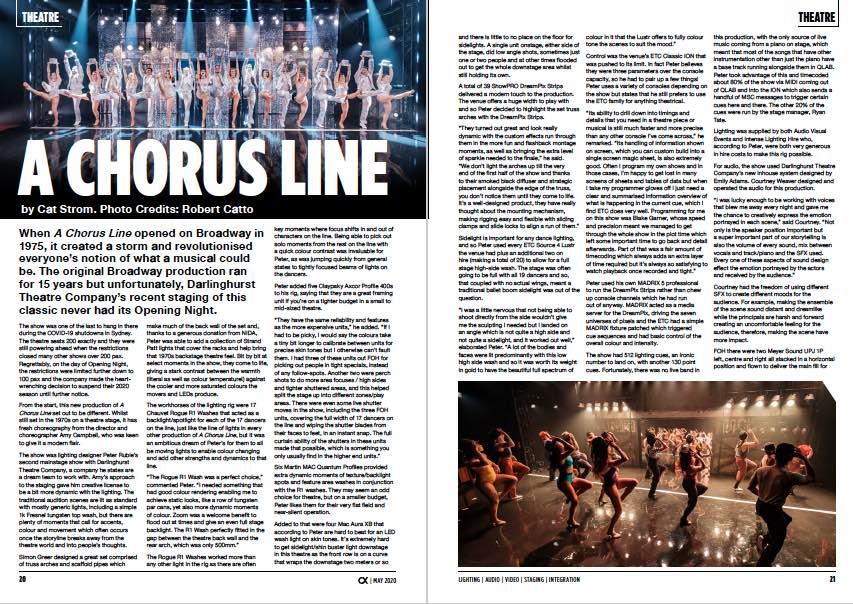
Entertainment technology news and issues for Australia and New Zealand
– in print and free online www.cxnetwork.com.au
© VCS Creative Publishing
Subscribe
Published monthly since 1991, our famous AV industry magazine is free for download or pay for print. Subscribers also receive CX News, our free weekly email with the latest industry news and jobs.

